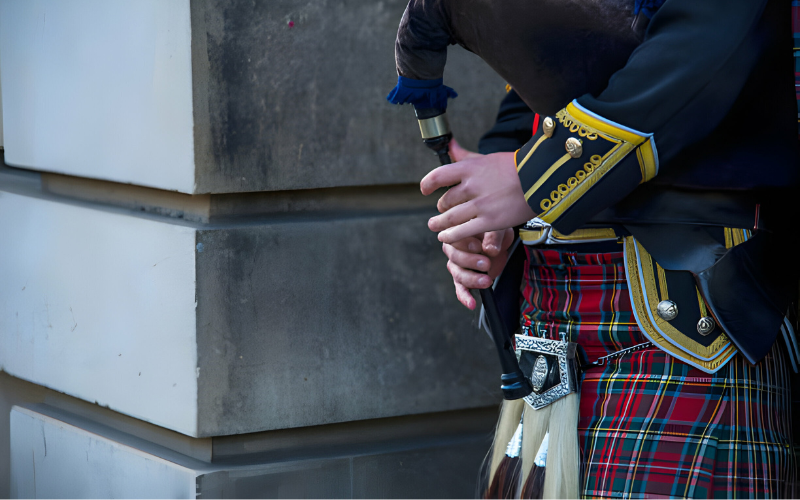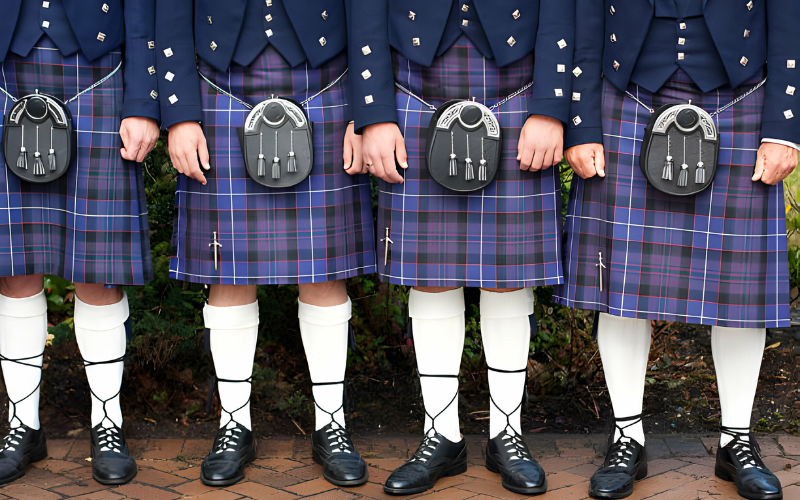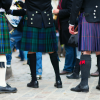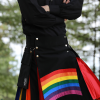The formal kilt, a timeless garment deeply rooted in Scottish heritage, is not merely a piece of clothing; it’s a symbol of tradition, culture, and elegance. In this comprehensive guide, we will delve into the intricacies of formal kilts, exploring their evolution, components, styling trends, and global significance. Whether you’re a seasoned kilt enthusiast or a newcomer to this sartorial tradition, this article aims to be your go-to resource for mastering the art of the formal kilt.
The formal kilt, an iconic piece of attire synonymous with Scottish tradition, has transcended its cultural origins to become a global fashion statement. Rooted in centuries of history, this garment is more than just fabric; it’s a symbol of identity, pride, and sophistication. In this guide, we will explore the nuances of formal kilts, dissecting their components, understanding their cultural significance, and providing practical tips for donning them with mastery.
Understanding Formal Kilts
The formal kilt, often made of wool or other high-quality materials, is distinguished by its unique design, which includes pleats, a kilt pin, and a sporran. While traditionally associated with Scotland, formal kilts have evolved over time, incorporating modern styles and materials.
The formal kilt has undergone a fascinating evolution. From its origins in the Scottish Highlands to its adaptation in various global contexts, the kilt’s journey reflects changes in fashion, societal norms, and individual expression.
Formal Kilt Components
The primary component of a formal kilt, it is essential to choose the right design and ensure a proper fit. The tartan pattern, unique to each clan or region, adds a touch of personalization to the garment.
Beyond the kilt, accessories play a crucial role. The sporran, a small pouch worn at the front, serves both functional and aesthetic purposes. The belt and buckle, along with the distinctive ghillie brogues, complete the ensemble with finesse.
Tradition Meets Style
The formal kilt is steeped in symbolism, reflecting Scotland’s rich cultural tapestry. The tartan patterns, often associated with specific clans, tell stories of lineage and history. Embracing these traditions adds depth and meaning to the wearing of a formal kilt.
While tradition forms the backbone, the formal kilt has found its place in contemporary fashion. From runway appearances to everyday wear, individuals are blending tradition with modern sensibilities, creating a harmonious fusion of style.
Mastering the Art of Wearing a Formal Kilt
Donning a formal kilt requires precision. From ensuring the right length to adjusting accessories, mastering the art involves attention to detail. This step-by-step guide will walk you through the process, ensuring you exude confidence in your kilted attire.
While the formal kilt is a symbol of grace, certain pitfalls can diminish its impact. Avoiding common mistakes, such as improper length or mismatched accessories, is crucial to presenting a polished appearance.
Maintaining and Preserving Formal Kilts
To prolong the life of your formal kilt, proper cleaning and care are essential. Different fabrics require specific approaches, and storing your kilt correctly ensures it remains pristine for years to come.
Many formal kilts boast traditional embellishments, such as intricate tartan patterns or custom embroidery. Preserving these details requires gentle handling and a commitment to maintaining the garment’s integrity.

Cultural Significance and Events
The formal kilt takes center stage at events like Highland Games, where participants proudly display their clan tartans. Additionally, weddings and other celebrations often witness the elegance of formal kilts, making them an integral part of joyous occasions.
Beyond Scotland, formal kilts have gained international recognition. Celebrations like International Kilt Day underscore the global appeal of this garment, showcasing its versatility and acceptance across diverse cultures.
Formal Kilt Designers and Brands
The world of formal kilts is not limited to tradition alone. Renowned designers have taken the helm, infusing their creativity into kilt designs that seamlessly blend heritage with contemporary flair.
From traditional designs to avant-garde interpretations, leading brands offer a diverse range of formal kilts. Exploring these options allows enthusiasts to find a style that resonates with their personal taste.
Formal Kilts: A Global Perspective
The formal kilt has transcended its Scottish origins, gaining popularity in various countries. Understanding its global impact provides insight into the universal appeal of this unique garment.
The adoption of formal kilts in different cultures reflects not only a fashion choice but also a cultural statement. Exploring how the kilt has been embraced worldwide adds a layer of richness to its narrative.
Conclusion
In conclusion, mastering the art of the formal kilt is a journey that intertwines tradition and style. From understanding its components to appreciating its cultural significance, this guide has equipped you with the knowledge to wear a formal kilt with confidence and pride. As you embark on your kilted adventures, may you carry the legacy of this timeless garment with grace and sophistication.
FAQs
Q1: What is the significance of the tartan pattern in a formal kilt?
The tartan pattern in a formal kilt holds deep significance, representing a specific clan, region, or family lineage. Each tartan tells a unique story, making it an emblem of heritage and identity.
Q2: Can I wear a formal kilt for casual occasions, or is it strictly reserved for special events?
Formal kilts have evolved to embrace versatility. While they are often associated with special events like weddings and Highland Games, modern styling trends encourage their use for various occasions, blending tradition with everyday wear.
Q3: How do I choose the right size for a formal kilt?
Choosing the right size for a formal kilt involves accurate measurements. Measure your waist at the navel and decide on the desired kilt length. It’s advisable to refer to the sizing chart provided by the manufacturer for a precise fit.
Q4: What are some common mistakes to avoid when wearing a formal kilt?
Common mistakes to avoid include wearing a kilt of improper length, mismatching accessories, or neglecting to properly secure the sporran. Attention to detail is crucial for presenting a polished and authentic appearance.
Q5: How do I care for and clean my formal kilt?
Cleaning and caring for a formal kilt depend on the fabric. Generally, dry cleaning is recommended for wool kilts, while some may be hand-washed. Store your kilt in a cool, dry place, and avoid hanging it for extended periods to maintain its shape and integrity. Always follow the care instructions provided by the manufacturer.




Leave a reply